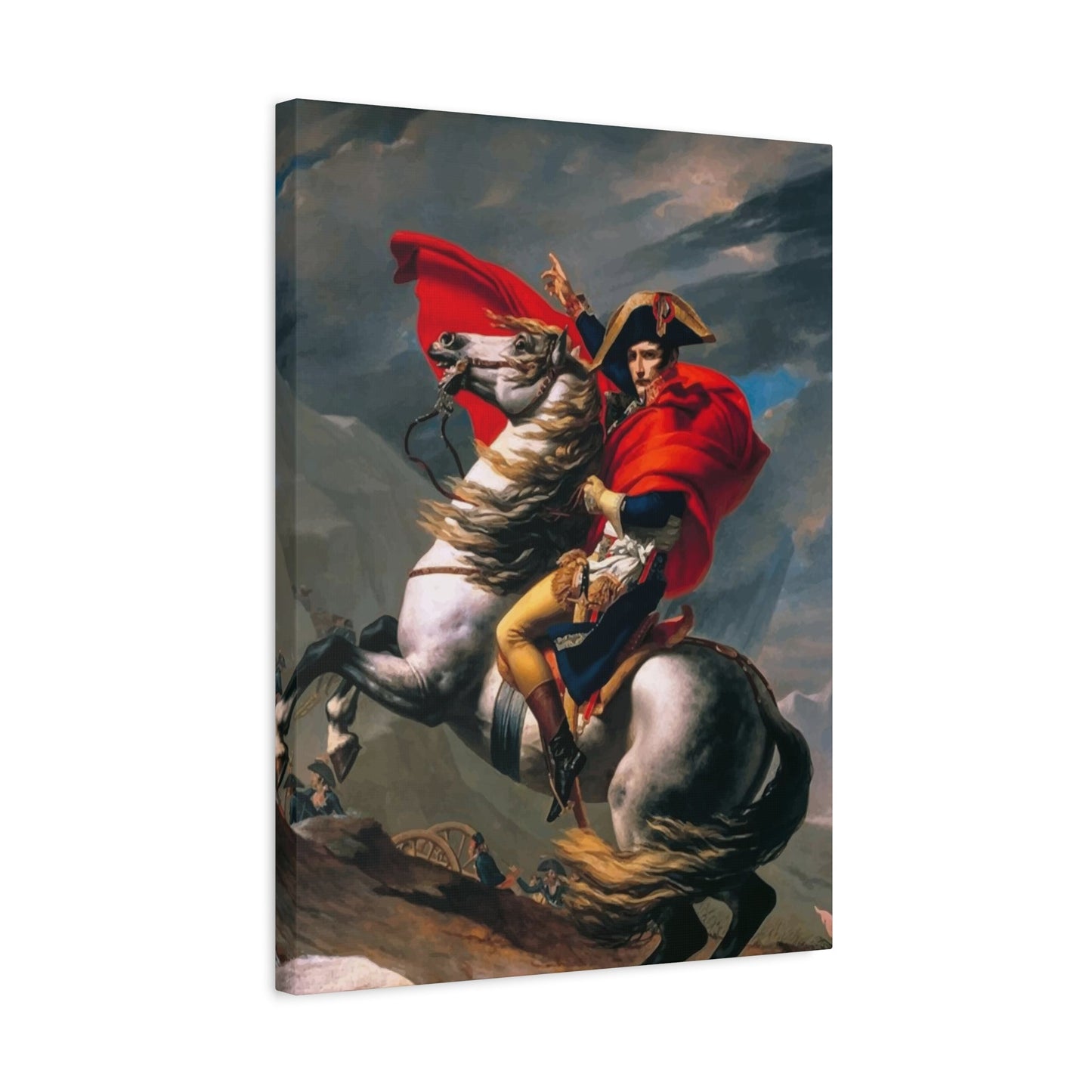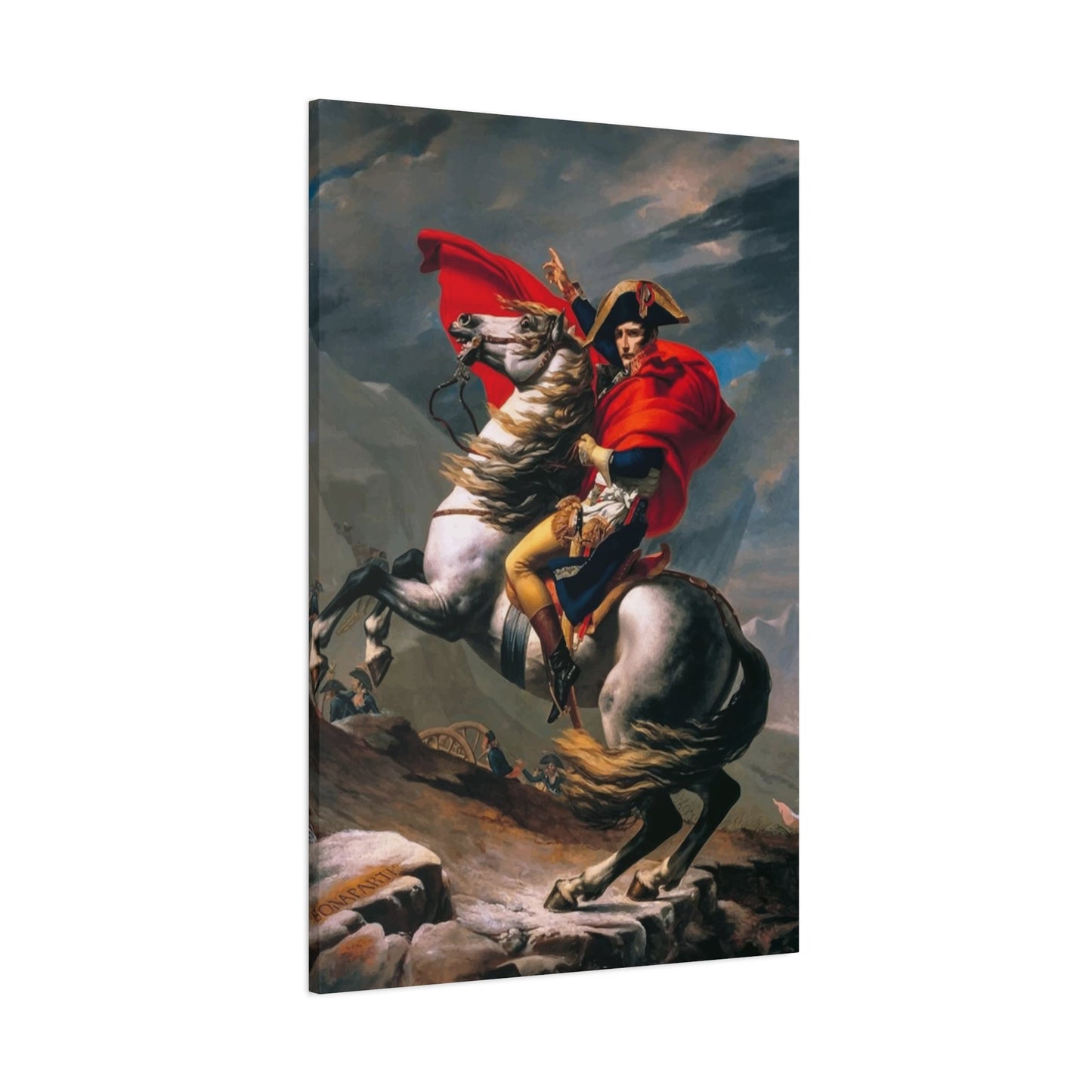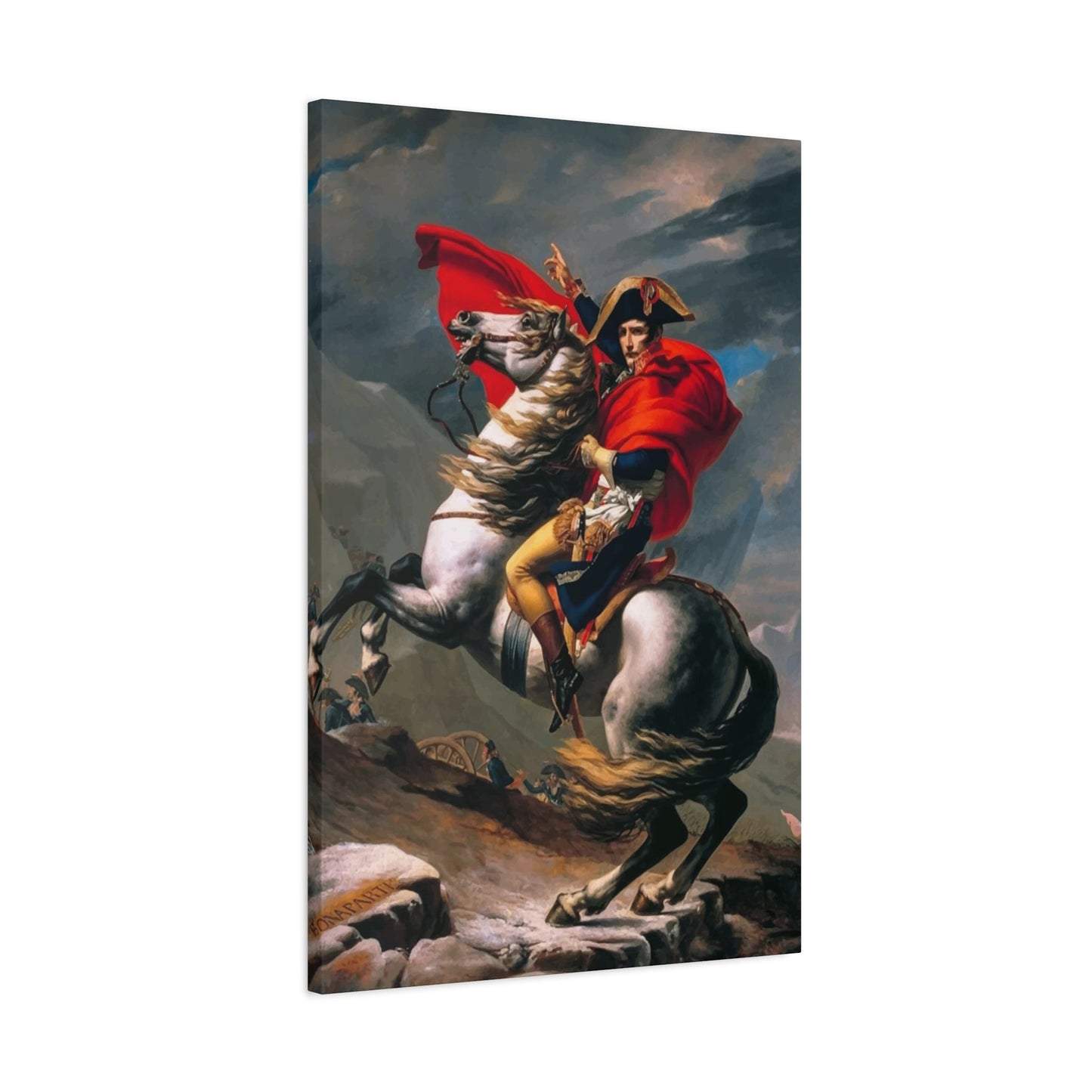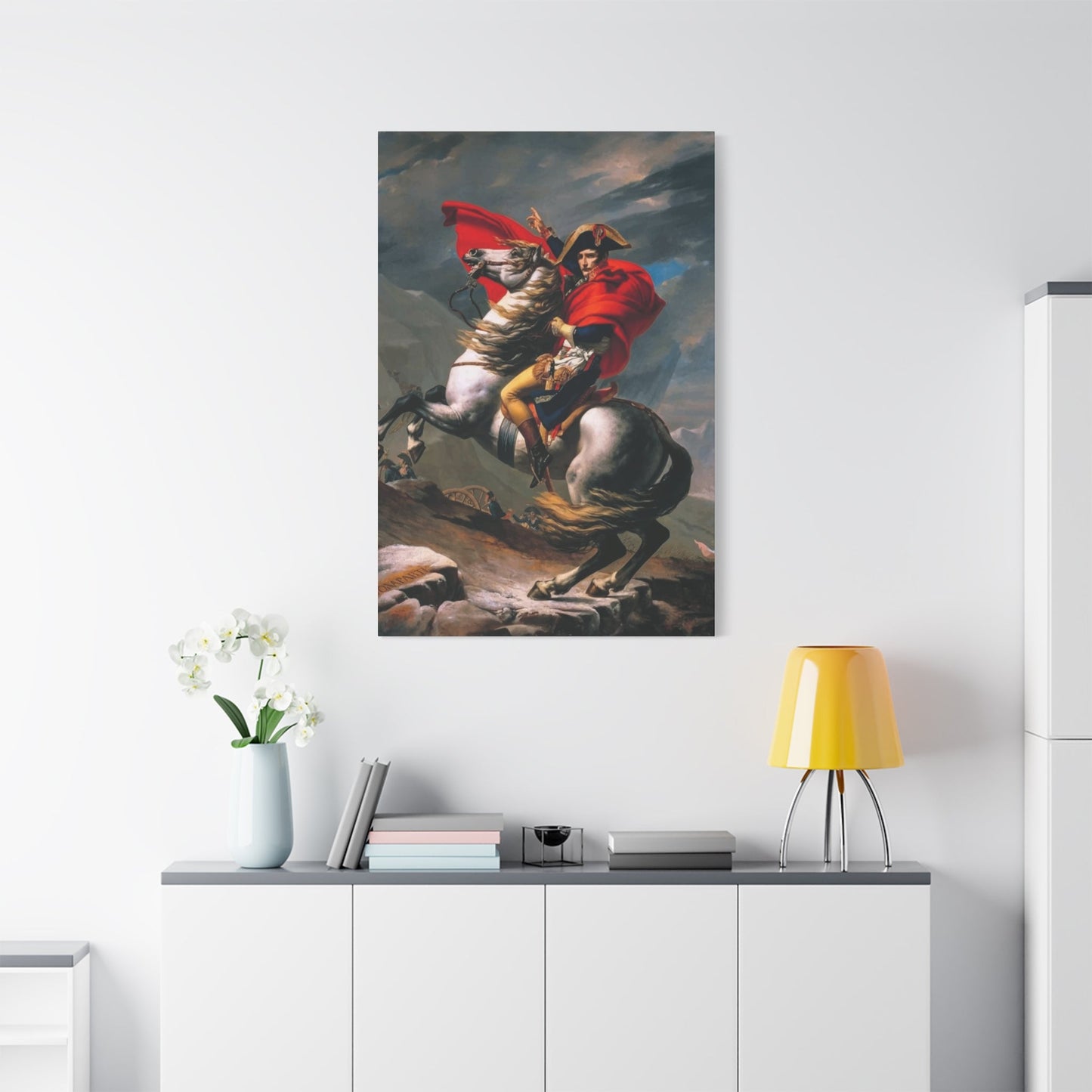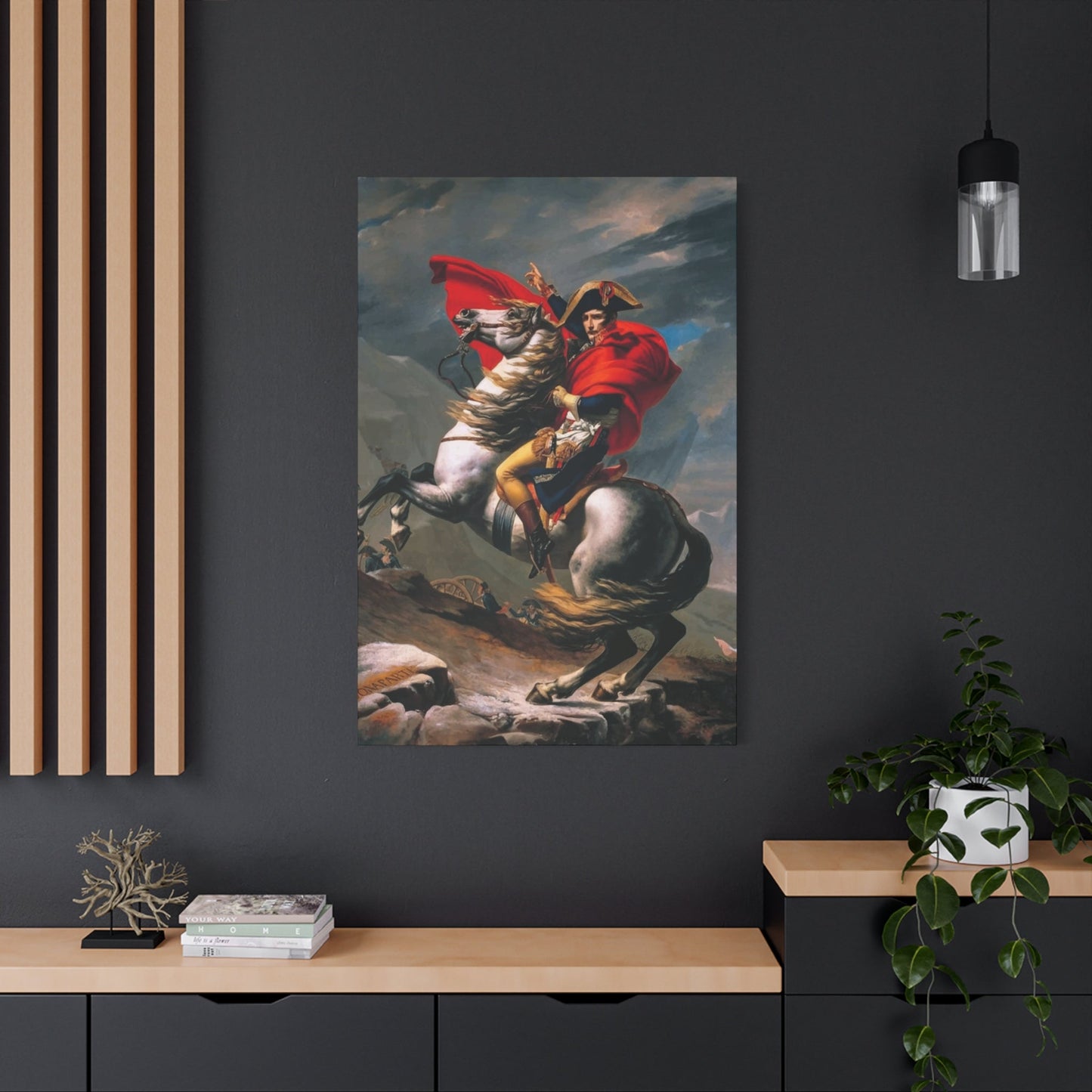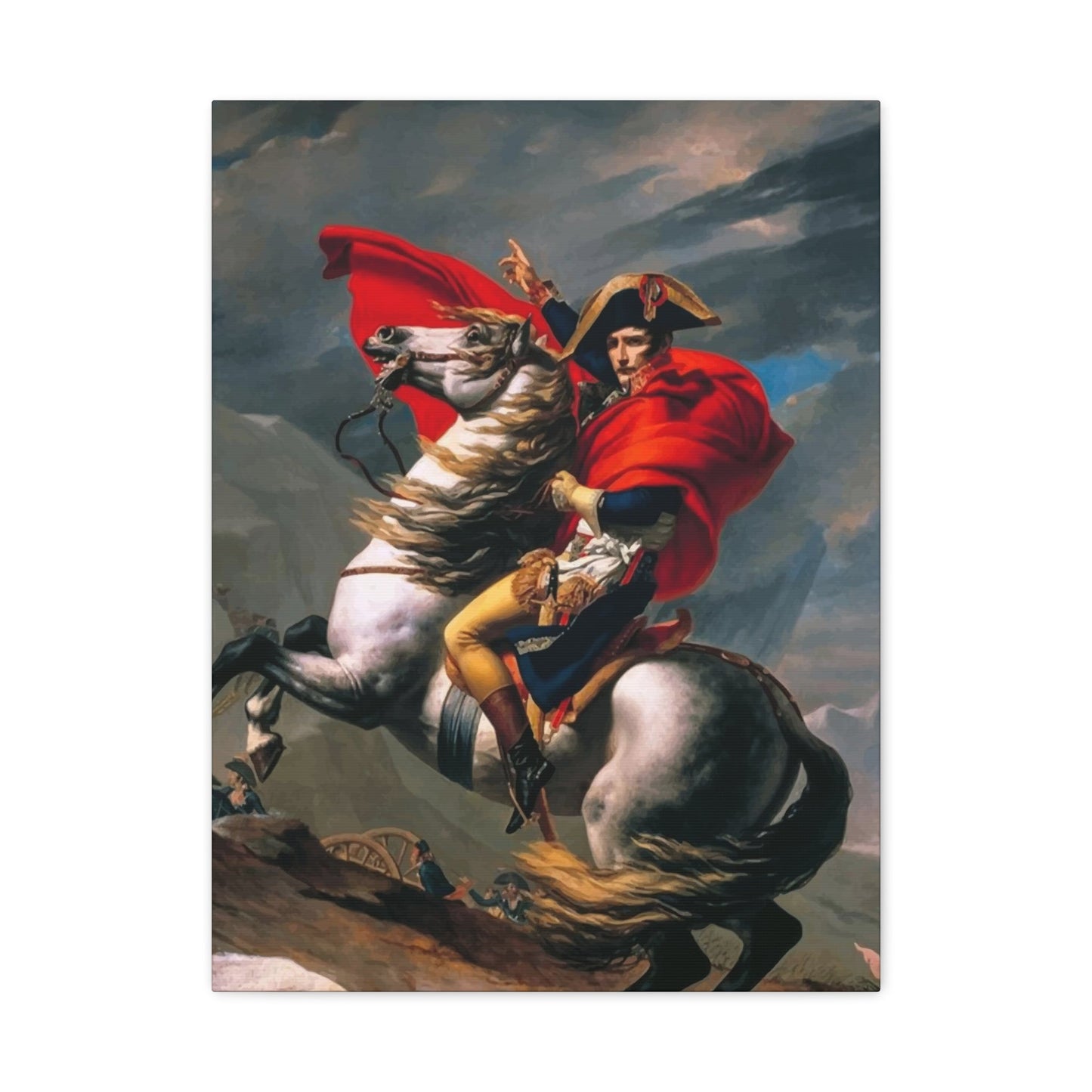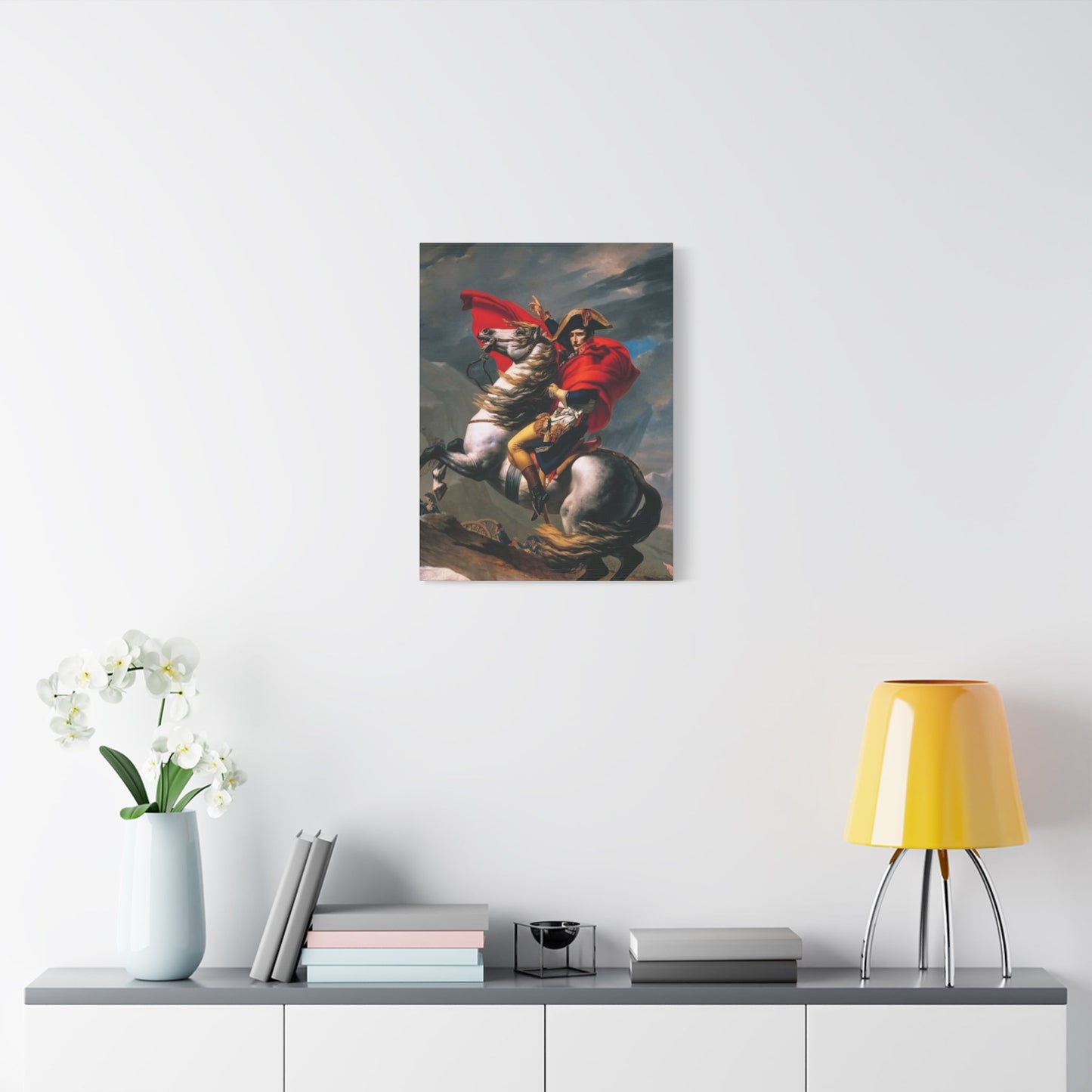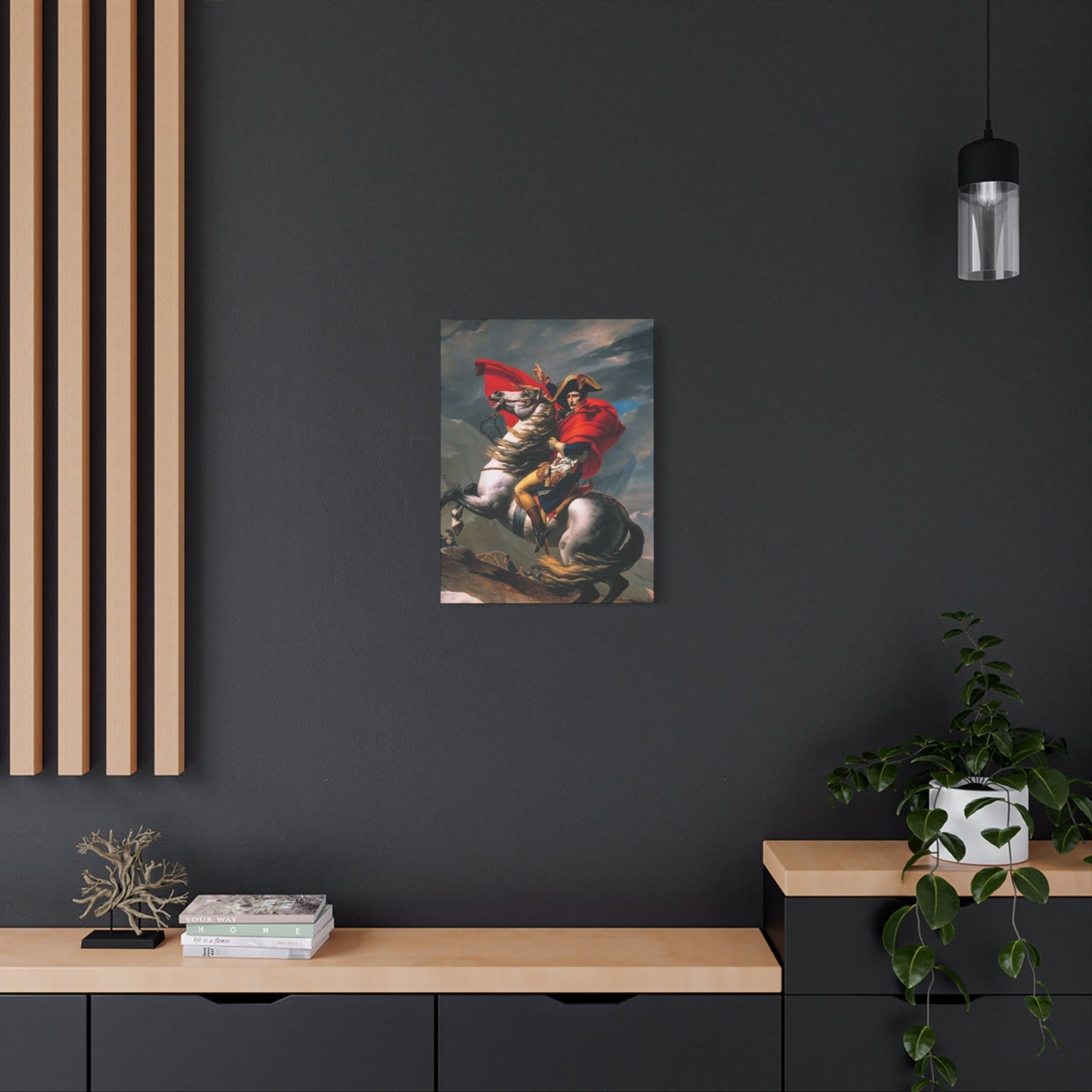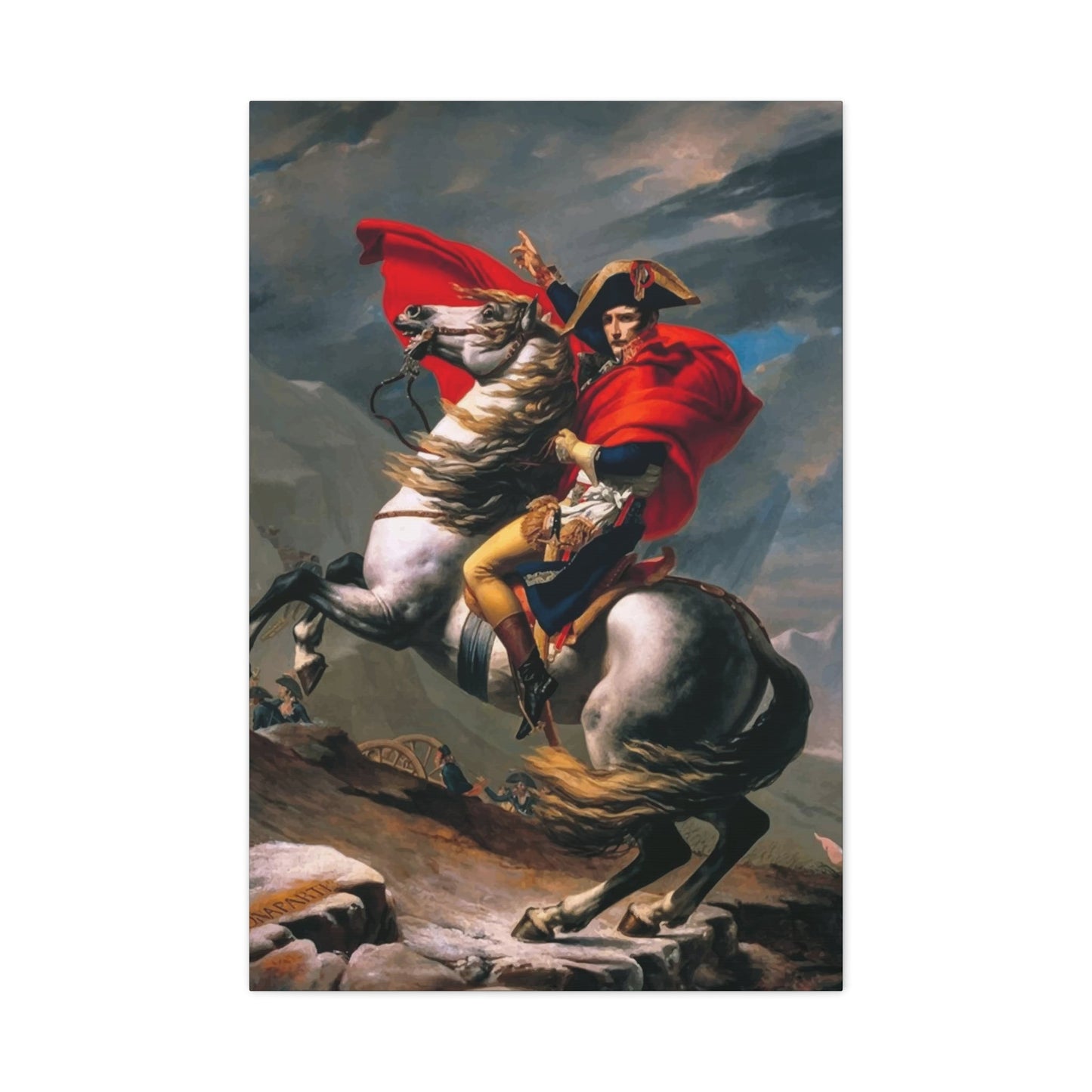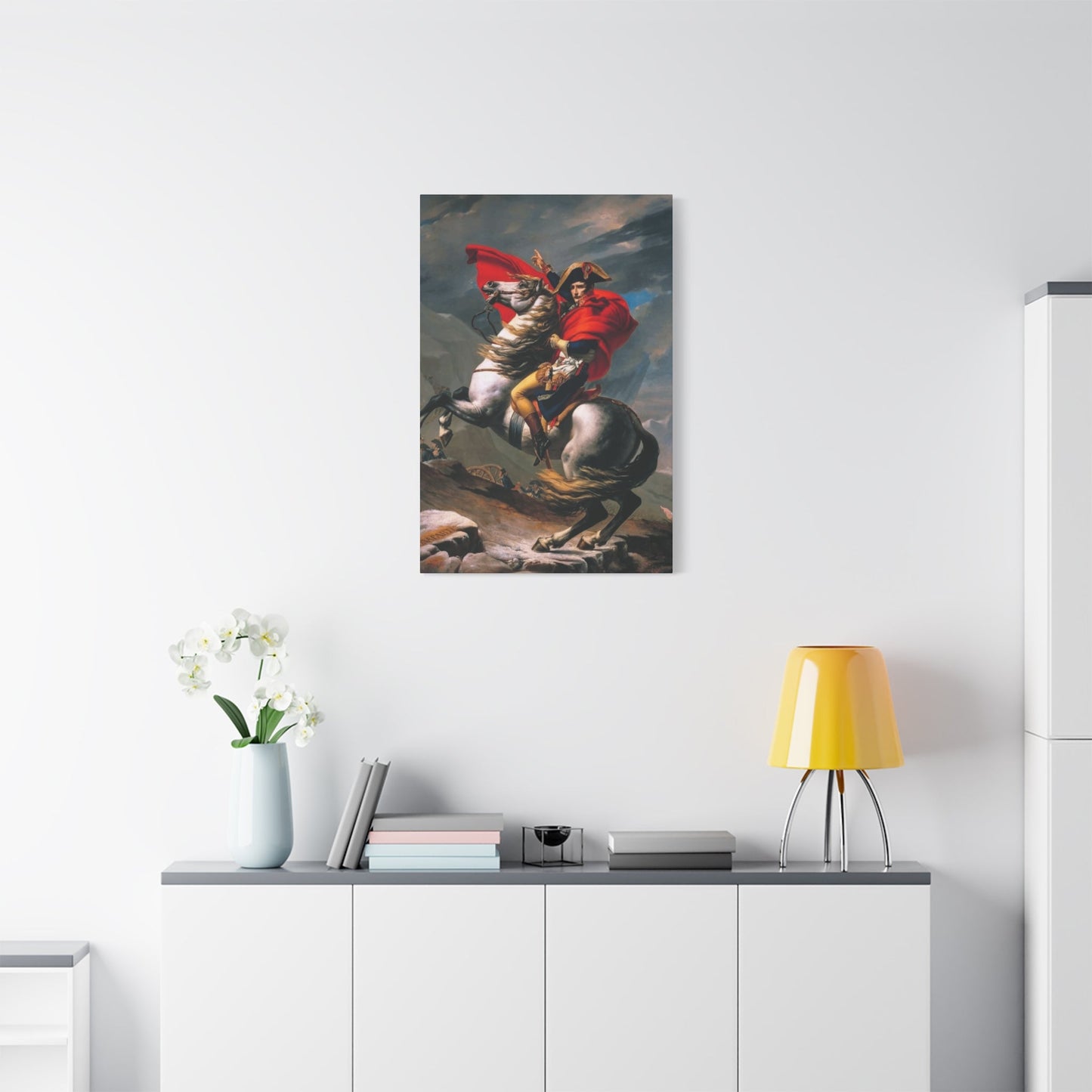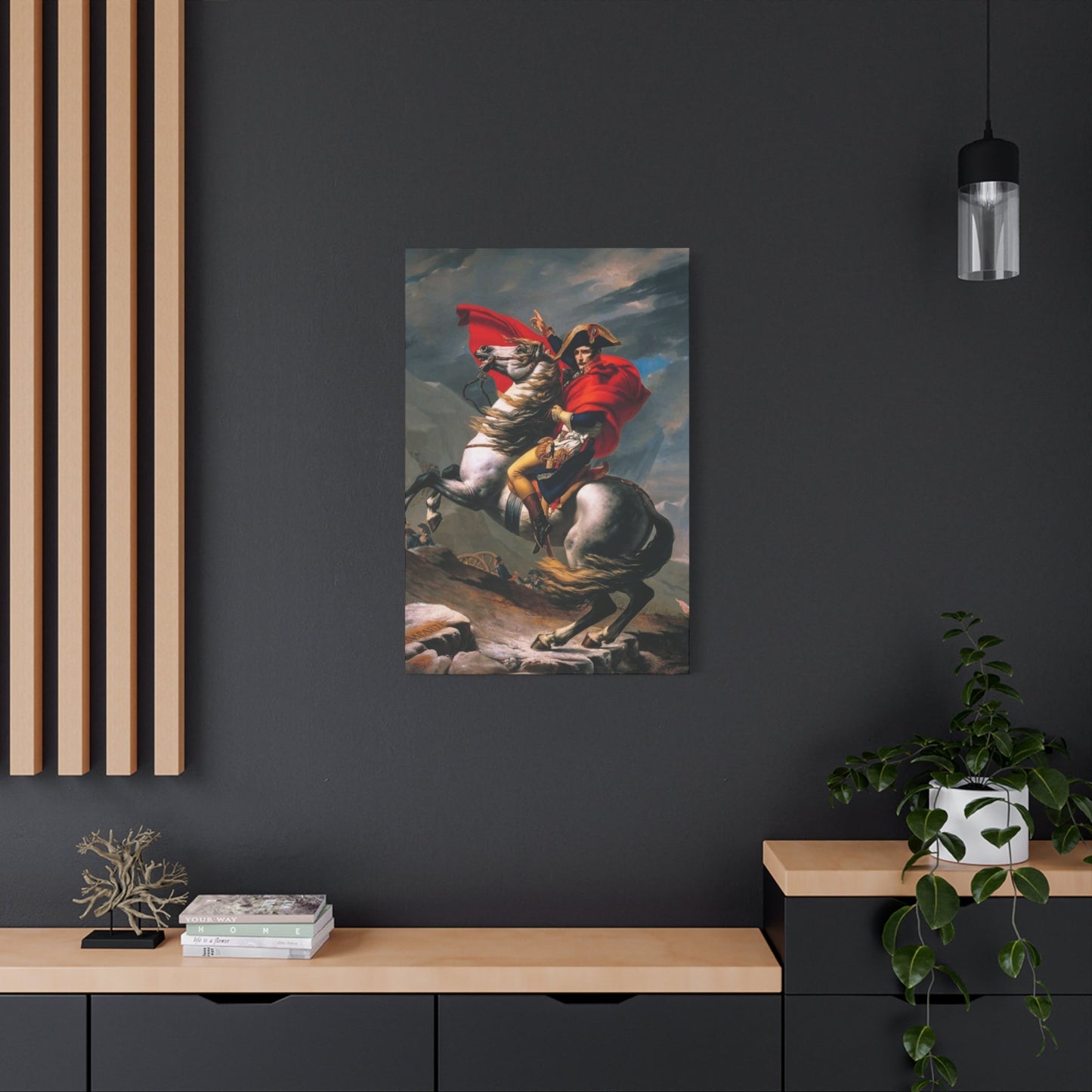Timeless Elegance: Classicism Wall Art Traditions and Modern Applications
The realm of artistic expression has been profoundly shaped by classical traditions that emerged from ancient civilizations, particularly those of Greece and Rome. These foundational principles continue to influence contemporary aesthetic choices, offering homeowners and art enthusiasts an opportunity to incorporate sophisticated, time-tested design elements into their living environments. The enduring appeal of classical artistic traditions lies in their emphasis on harmony, proportion, and refined beauty that transcends temporal boundaries.
Classical artistic principles have maintained their relevance across centuries, providing a framework for creating visually compelling and emotionally resonant environments. The sophisticated approach to composition, color harmony, and thematic content found in classical traditions offers modern homeowners a pathway to achieving refined elegance within their personal sanctuaries. These artistic traditions emphasize the importance of balance, symmetry, and proportion while celebrating human achievement and natural beauty.
The integration of classical artistic elements into contemporary living environments represents more than mere decoration; it constitutes a conscious choice to embrace cultural heritage and timeless aesthetic principles. This approach to home enhancement recognizes the power of visual art to transform ordinary rooms into spaces that reflect sophistication, learning, and appreciation for humanity's greatest artistic achievements. Classical artistic traditions provide a rich vocabulary of symbols, motifs, and compositional techniques that continue to resonate with modern audiences.
Understanding Classical Artistic Traditions and Their Foundations
Classical artistic traditions emerged from the sophisticated civilizations of ancient Greece and Rome, establishing fundamental principles that continue to influence artistic expression today. These traditions emphasize the pursuit of ideal beauty through mathematical precision, harmonious proportions, and the celebration of human achievement. The classical approach to art prioritizes clarity, order, and rational organization, creating works that appeal to both intellectual understanding and emotional response.
The philosophical underpinnings of classical artistic traditions rest upon the belief that art should elevate the human spirit while reflecting the natural order of the universe. Ancient Greek philosophers, particularly Plato and Aristotle, developed theories about the relationship between art and reality that continue to influence artistic production today. These philosophical frameworks emphasize the importance of mimesis, or the artistic representation of nature, while recognizing art's capacity to reveal deeper truths about human existence.
Classical artistic traditions established standardized approaches to composition, proportion, and subject matter that became foundational elements of Western artistic education. The development of linear perspective, anatomical accuracy, and mathematical principles of proportion during classical periods created technical standards that artists have referenced for over two millennia. These technical achievements represent humanity's systematic approach to understanding and representing visual reality through artistic means.
The concept of ideal beauty in classical artistic traditions extends beyond mere aesthetic pleasure to encompass moral and philosophical dimensions. Classical artists sought to create works that embodied virtue, wisdom, and harmony, believing that exposure to beautiful art could improve human character. This moral dimension of classical art explains its enduring appeal as a means of creating environments that promote contemplation, learning, and personal refinement.
Classical artistic traditions established genres and subject matter that continue to influence contemporary artistic production. Historical painting, portraiture, landscape, and still life emerged as distinct categories during classical periods, each with specific conventions and purposes. These categorical frameworks provide structure for understanding artistic works while offering contemporary artists and collectors established contexts for creative expression and aesthetic appreciation.
The technical mastery demonstrated in classical artistic works established standards of excellence that continue to inspire contemporary artists and artisans. The sophisticated understanding of light, shadow, color relationships, and compositional balance found in classical works represents the culmination of centuries of artistic development. These technical achievements provide modern practitioners with proven methods for creating visually compelling and emotionally resonant artistic expressions.
Hellenic and Roman Contributions to Classical Artistic Expression
The artistic traditions of ancient Greece established fundamental principles that continue to influence visual culture throughout the world. Greek artists developed sophisticated approaches to representing the human form, emphasizing ideal proportions and dynamic movement that captured both physical beauty and spiritual significance. The Greek concept of kallos, or ideal beauty, established standards for artistic excellence that emphasized harmony, proportion, and perfection in artistic representation.
Greek artistic innovations included the development of contrapposto, a method of depicting standing figures that creates natural, lifelike poses through the careful distribution of weight and tension. This technical advancement allowed artists to create more dynamic and realistic representations of human subjects while maintaining the classical emphasis on ideal proportions. The influence of contrapposto extends far beyond sculpture into painting and drawing, providing artists with methods for creating convincing and aesthetically pleasing figure compositions.
The Roman empire expanded upon Greek artistic foundations while developing distinctive characteristics that reflected their cultural values and practical needs. Roman artists excelled in portraiture, creating realistic depictions that captured individual personality while maintaining classical standards of composition and technique. Roman portrait art established conventions for depicting authority, dignity, and character that continue to influence contemporary portraiture.
Roman architectural achievements profoundly influenced decorative arts, with elements such as columns, arches, and pediments becoming standard motifs in classical artistic vocabulary. The Roman development of realistic landscape painting and architectural perspective created new possibilities for decorative schemes that could transform flat surfaces into convincing representations of three-dimensional environments. These innovations provided future artists with powerful tools for creating immersive and visually compelling decorative programs.
The Roman emphasis on historical narrative in artistic works established important precedents for commemorative and educational art. Roman artists developed sophisticated methods for depicting complex historical events and mythological narratives that could communicate important cultural values and historical knowledge to viewers. This narrative tradition continues to influence contemporary artists who seek to create works that combine aesthetic beauty with meaningful content.
Both Greek and Roman artistic traditions emphasized the importance of craftsmanship and technical excellence, establishing workshop traditions that transmitted artistic knowledge across generations. The systematic approach to artistic education developed during classical periods created standardized methods for training artists that emphasized both technical skill and cultural knowledge. These educational traditions provided the foundation for later artistic movements and continue to influence contemporary artistic training programs.
Renowned Classical Compositions for Domestic Enhancement
The selection of classical artistic works for residential environments requires careful consideration of both aesthetic merit and thematic appropriateness. Masterworks from the Renaissance period, such as those by Leonardo da Vinci, Michelangelo, and Raphael, offer homeowners access to images that have been celebrated for centuries as pinnacles of artistic achievement. These works combine technical mastery with profound emotional and intellectual content, creating powerful focal points for sophisticated living environments.
Landscape paintings from the classical tradition provide excellent options for creating serene and contemplative atmospheres within homes. Works by Claude Lorrain, Nicolas Poussin, and other masters of classical landscape painting offer idealized visions of natural beauty that can transform ordinary rooms into spaces that evoke tranquility and philosophical reflection. These compositions typically feature carefully balanced arrangements of natural elements that create harmonious and visually satisfying decorative schemes.
Classical still life paintings offer intimate and approachable options for residential decoration while maintaining connection to artistic traditions. Masters such as Giorgio de Chirico and Giorgio Morandi created works that elevate everyday objects to the level of profound artistic statements. These compositions provide opportunities for creating sophisticated decorative schemes that celebrate beauty in familiar forms while demonstrating artistic refinement and cultural awareness.
Mythological subjects from classical tradition provide rich sources of symbolic content that can enhance residential environments with layers of meaning and cultural reference. Paintings depicting scenes from Greek and Roman mythology offer viewers access to timeless stories about human nature, moral behavior, and cosmic order. These narrative works create opportunities for contemplation and discussion while providing visually compelling decorative elements.
Religious subjects from the classical tradition offer profound spiritual content that can create meaningful and uplifting residential environments. Works depicting biblical narratives or saints' lives provide opportunities for meditation and spiritual reflection while demonstrating appreciation for humanity's greatest artistic achievements. These works combine aesthetic beauty with spiritual significance, creating decorative schemes that nourish both visual and spiritual sensibilities.
Classical portrait painting provides excellent models for creating sophisticated and personalized residential environments. Historical portraits demonstrate the evolution of individual representation while offering insights into fashion, social customs, and cultural values from different periods. These works can create gallery-like atmospheres within homes while providing ongoing sources of visual interest and cultural education.
Structural Components in Classical Artistic Vocabulary
Classical artistic traditions incorporate architectural elements as fundamental components of compositional design, creating works that demonstrate sophisticated understanding of structural relationships and spatial organization. Columns, pediments, arches, and other architectural features serve both compositional and symbolic functions within classical artistic works. These elements provide visual stability while referencing cultural associations with permanence, authority, and cultural achievement.
The classical orders of architecture – Doric, Ionic, and Corinthian – each possess distinctive characteristics that convey different emotional and symbolic meanings within artistic compositions. Doric columns suggest strength, simplicity, and masculine virtue, while Ionic columns convey elegance, refinement, and intellectual achievement. Corinthian columns represent luxury, complexity, and artistic sophistication. Understanding these associations allows viewers to appreciate the nuanced communication that occurs through architectural references in classical art.
Perspective systems developed during the Renaissance period provided artists with scientific methods for depicting architectural elements convincingly within two-dimensional compositions. The mathematical precision required for accurate architectural representation demonstrates the classical emphasis on rational order and systematic knowledge. These technical achievements allow artists to create convincing architectural environments that can transport viewers into idealized classical settings.
The integration of architectural elements into painted compositions creates hierarchical relationships that guide viewer attention and establish narrative priorities. Architectural frameworks can provide stage-like settings for human figures while creating spatial relationships that enhance storytelling effectiveness. The sophisticated use of architectural elements demonstrates the classical belief that art should combine beauty with intellectual content and moral instruction.
Decorative architectural elements such as moldings, capitals, and ornamental details provide opportunities for displaying artistic skill while creating visually rich surfaces that reward close examination. The classical emphasis on craftsmanship extends to the careful rendering of these decorative elements, which often incorporate symbolic motifs drawn from nature or mythology. These details demonstrate the classical commitment to excellence in all aspects of artistic production.
The symbolic associations of architectural elements in classical artistic traditions connect individual works to broader cultural narratives about civilization, progress, and human achievement. Temples, palaces, and other monumental architectural forms represent human capacity for creating lasting beauty and cultural significance. The inclusion of these elements in artistic works suggests connections between individual aesthetic experiences and larger cultural values and aspirations.
Mythological Narratives in Classical Artistic Expression
Mythological themes provide classical artistic traditions with rich sources of narrative content that combine entertainment with moral and philosophical instruction. The stories of Greek and Roman mythology offer timeless insights into human nature, cosmic order, and ethical behavior that remain relevant for contemporary audiences. These narratives provide artists with sophisticated subject matter that can support complex compositional arrangements while communicating profound truths about human existence.
The transformation myths found in Ovid's Metamorphoses have inspired countless artistic works that explore themes of change, growth, and spiritual development. Stories such as those of Daphne and Apollo, Pygmalion and Galatea, and Narcissus provide artists with opportunities to depict dramatic moments while exploring deeper meanings about human relationships with nature, art, and self-knowledge. These narratives offer rich symbolic content that can enhance residential environments with layers of meaning and cultural reference.
Heroic narratives from classical mythology provide models of virtue, courage, and moral behavior that can inspire and elevate viewers. The stories of heroes such as Hercules, Theseus, and Perseus demonstrate human capacity for overcoming obstacles and achieving greatness through determination and moral strength. These narratives create opportunities for creating inspiring residential environments that celebrate human potential and encourage personal growth.
Love stories from classical mythology explore the complex dynamics of human relationships while providing artists with emotionally compelling subject matter. The tales of Venus and Mars, Cupid and Psyche, and other divine romances offer insights into the nature of attraction, commitment, and spiritual union. These narratives provide excellent sources for creating romantic and intimate residential environments that celebrate the beauty of human relationships.
Divine narratives from classical mythology explore fundamental questions about power, justice, and cosmic order that remain relevant for contemporary audiences. Stories involving Jupiter, Minerva, Diana, and other major deities provide frameworks for understanding human relationships with forces beyond individual control. These narratives offer opportunities for creating contemplative residential environments that encourage philosophical reflection and spiritual growth.
The seasonal and agricultural myths of classical tradition connect human experience with natural cycles and cosmic rhythms. Stories such as those of Demeter and Persephone, Flora and Zephyr, and other nature deities provide frameworks for understanding human relationships with the natural world. These narratives offer excellent sources for creating harmonious residential environments that celebrate the beauty of natural cycles and seasonal change.
Neoclassical Aesthetic Principles for Contemporary Applications
The neoclassical movement of the eighteenth and nineteenth centuries revived classical artistic principles while adapting them for contemporary tastes and cultural contexts. This revival emphasized moral seriousness, civic virtue, and educational content while maintaining classical standards of technical excellence and compositional harmony. Neoclassical artists such as Jacques-Louis David, Jean-Auguste-Dominique Ingres, and Antonio Canova created works that demonstrate how classical principles can address contemporary concerns and cultural values.
Neoclassical artistic principles emphasize clarity, simplicity, and rational organization as means of communicating serious subject matter effectively. The neoclassical rejection of rococo decorativeness in favor of more austere and dignified approaches created artistic vocabularies that emphasize essential rather than superficial qualities. This aesthetic philosophy provides excellent guidance for contemporary homeowners who seek sophisticated rather than merely fashionable decorative schemes.
The neoclassical emphasis on historical and literary subjects provides contemporary audiences with access to educational content while enjoying aesthetic pleasure. Neoclassical artists frequently depicted scenes from ancient history, classical literature, and biblical narratives that could instruct viewers about important cultural values and moral principles. This educational dimension of neoclassical art makes it particularly appropriate for residential environments where learning and personal development are valued.
Neoclassical color palettes typically emphasize earth tones, muted hues, and subtle harmonies that create serene and contemplative atmospheres. The neoclassical rejection of bright, artificial colors in favor of more natural and subdued tonalities reflects the movement's emphasis on authenticity and moral seriousness. These color approaches provide excellent models for creating sophisticated residential environments that promote tranquility and reflection.
The neoclassical revival of classical drapery and costume conventions creates opportunities for contemporary artists and decorators to incorporate historical references while maintaining contemporary relevance. Neoclassical attention to fabric textures, clothing details, and historical accuracy demonstrates commitment to authenticity and cultural knowledge. These approaches provide models for creating residential environments that celebrate historical awareness while remaining accessible to contemporary audiences.
Neoclassical sculptural principles emphasize ideal beauty, noble sentiment, and moral elevation while maintaining technical excellence and classical proportions. The neoclassical revival of classical sculptural techniques created works that combine ancient wisdom with contemporary sensibility. These principles provide guidance for selecting sculptural works and three-dimensional decorative elements that can enhance residential environments with dignity and cultural sophistication.
Classical Sculptural Reproductions for Refined Residential Settings
High-quality reproductions of classical sculptures provide homeowners with access to some of humanity's greatest artistic achievements while creating sophisticated focal points within residential environments. Modern reproduction techniques using various materials and scales allow classical sculptural works to be adapted for contemporary living situations without compromising artistic integrity or cultural significance. These reproductions can transform ordinary rooms into gallery-like environments that celebrate artistic excellence and cultural heritage.
Classical portrait sculpture offers excellent models for creating personalized and historically informed residential environments. Busts of philosophers, poets, rulers, and other significant historical figures provide opportunities for creating study-like atmospheres that encourage learning and intellectual development. These sculptural works demonstrate the classical commitment to individual achievement while providing inspiring examples of human accomplishment and cultural contribution.
Mythological sculpture subjects provide rich symbolic content while creating visually compelling decorative elements for residential environments. Sculptures depicting gods, goddesses, heroes, and mythological creatures offer opportunities for creating environments that celebrate imagination, storytelling, and cultural tradition. These works can serve as conversation starters while providing ongoing sources of visual interest and cultural education.
Classical relief sculpture provides excellent options for creating sophisticated architectural enhancement within residential settings. Relief panels depicting historical narratives, mythological scenes, or decorative motifs can transform plain surfaces into richly detailed and culturally significant decorative schemes. These sculptural elements demonstrate the classical integration of architecture and sculpture while providing opportunities for displaying artistic appreciation and cultural knowledge.
Garden sculpture from the classical tradition provides opportunities for extending sophisticated aesthetic principles into outdoor residential environments. Classical garden sculptures typically depict seasonal themes, mythological subjects, or allegorical concepts that enhance landscape design while creating connections between built and natural environments. These sculptural elements demonstrate the classical understanding of art as environmental enhancement rather than isolated decoration.
The scale and placement of classical sculptural reproductions within residential environments requires careful consideration of proportional relationships and visual hierarchy. Classical principles of proportion and balance provide guidance for creating harmonious arrangements that enhance rather than overwhelm residential settings. Understanding these principles allows homeowners to create sophisticated sculptural displays that demonstrate artistic knowledge while maintaining comfortable and livable environments.
Achieving Visual Harmony Through Classical Compositional Principles
Classical artistic traditions established sophisticated methods for organizing visual elements that create harmonious and psychologically satisfying compositions. The principles of symmetry, balance, proportion, and rhythm provide frameworks for understanding how classical artists achieved their characteristic effects of dignity, serenity, and visual pleasure. These compositional principles offer contemporary decorators and homeowners proven methods for creating visually compelling and emotionally satisfying residential environments.
Symmetrical composition in classical art creates feelings of stability, order, and formal dignity that can enhance residential environments with a sense of permanence and cultural significance. Classical symmetry extends beyond simple mirror-image arrangements to include more subtle forms of balanced organization that create visual harmony without rigid formality. Understanding various types of symmetrical arrangement allows contemporary applications to achieve classical effects while maintaining contemporary flexibility and personal expression.
The classical concept of the golden ratio provides mathematical foundation for creating proportional relationships that are inherently pleasing to human perception. This mathematical principle, derived from observations of natural forms and classical architectural monuments, offers precise guidance for determining optimal relationships between different elements within artistic compositions. Application of golden ratio principles can enhance contemporary residential environments with the same harmonious proportional relationships found in humanity's greatest architectural and artistic achievements.
Color harmony in classical artistic traditions typically emphasizes subtle relationships between related hues rather than dramatic contrasts or unusual combinations. Classical color principles prioritize unity, coherence, and visual tranquility over novelty or sensational effect. These approaches to color relationship provide excellent guidance for creating residential environments that promote serenity and contemplation while demonstrating sophisticated aesthetic sensibility.
Classical approaches to visual hierarchy guide viewer attention through compositions in ways that enhance comprehension and aesthetic pleasure. The systematic organization of primary, secondary, and supporting visual elements creates clear communication while maintaining overall compositional unity. These hierarchical principles provide frameworks for organizing complex residential decorative schemes that remain coherent and visually satisfying despite including multiple artistic elements.
The classical concept of unity in variety demonstrates how diverse elements can be organized into coherent wholes through systematic application of underlying principles. Classical compositions typically include multiple figures, architectural elements, landscape features, and decorative details that are unified through consistent application of proportional relationships, color harmonies, and compositional rhythms. These approaches provide models for creating complex residential environments that achieve sophistication without visual chaos.
Portrait Traditions as Enduring Decorative Elements
Classical portrait painting established conventions for depicting individual character while maintaining idealized standards of beauty and dignity. These portrait traditions provide excellent models for contemporary residential decoration, offering opportunities to create sophisticated and personalized environments that celebrate human achievement and individual distinction. Classical portraits demonstrate sophisticated understanding of psychological insight, technical skill, and cultural significance that continues to influence contemporary artistic production.
The development of portrait painting during the Renaissance period created standardized approaches to depicting social status, personal character, and cultural accomplishment through visual means. Renaissance portrait conventions established relationships between pose, costume, setting, and symbolic attributes that could communicate complex information about portrait subjects. Understanding these conventional systems allows contemporary viewers to appreciate the sophisticated communication that occurs through classical portrait art.
Royal and aristocratic portraits from classical traditions provide models of dignified representation that can enhance residential environments with associations of refinement and cultural sophistication. These portraits typically demonstrate the highest levels of artistic skill while depicting subjects in ways that emphasize their social importance and personal accomplishments. The formal conventions developed for aristocratic portraiture provide frameworks for creating residential environments that suggest similar values of dignity, achievement, and cultural awareness.
Scholar and artist portraits from classical traditions offer alternative models for residential decoration that emphasize intellectual achievement and creative accomplishment rather than social status or political power. Portraits of philosophers, poets, scientists, and artists demonstrate the classical appreciation for learning and creativity while providing inspiring examples of human intellectual achievement. These portrait types are particularly appropriate for study areas, libraries, and other residential environments dedicated to learning and creative activity.
Group portraits from classical traditions demonstrate sophisticated approaches to organizing multiple figures while maintaining individual characterization and overall compositional harmony. Family portraits, guild portraits, and other group compositions provide models for creating residential environments that celebrate community, collaboration, and shared values. These portrait types demonstrate the classical understanding of individual achievement within social contexts.
Contemporary applications of classical portrait principles can create personalized residential environments that honor family history while demonstrating appreciation for artistic tradition. Family portraits executed according to classical conventions can create lasting records of family relationships while contributing to sophisticated residential decorative schemes. These applications demonstrate how classical artistic principles can address contemporary needs while maintaining connection to cultural traditions.
Creating Sophisticated Residential Environments with Classical Artistic Elements
The successful integration of classical artistic elements into contemporary residential environments requires careful consideration of scale, proportion, lighting, and contextual relationships. Classical artworks are typically designed to be viewed under specific conditions and within particular architectural contexts that may differ significantly from contemporary residential settings. Understanding these requirements allows homeowners to create appropriate viewing conditions that honor artistic works while enhancing residential environments.
Lighting considerations for classical artworks require attention to both preservation and aesthetic presentation requirements. Classical paintings and prints are often sensitive to direct sunlight and require diffused illumination that minimizes damage while allowing adequate visibility. The classical tradition of gallery lighting provides models for creating residential lighting schemes that protect artworks while enhancing their visual impact and cultural significance.
Color relationships between classical artworks and residential environments should emphasize harmony and mutual enhancement rather than competition or conflict. Classical color palettes typically include earth tones, muted hues, and subtle harmonies that can provide guidance for selecting complementary paint colors, fabrics, and furnishing elements. Understanding classical color principles allows homeowners to create unified decorative schemes that enhance rather than detract from artistic focal points.
Furniture selection for residential environments that include classical artworks should emphasize quality, proportion, and historical appropriateness rather than novelty or fashion trends. Classical furniture traditions provide models for selecting pieces that complement rather than compete with artistic focal points while maintaining overall environmental harmony. The classical emphasis on craftsmanship and material quality offers guidance for creating residential environments that demonstrate consistent standards of excellence.
Architectural enhancement can support classical artistic elements by providing appropriate contextual frameworks that emphasize cultural significance and artistic importance. Classical architectural details such as moldings, columns, and decorative elements can create residential environments that echo the historical contexts for which classical artworks were originally created. These architectural enhancements demonstrate commitment to creating authentic and culturally informed residential environments.
The arrangement of classical artistic elements within residential environments should consider viewing angles, traffic patterns, and social functions while maintaining respect for artistic integrity and cultural significance. Classical artworks require adequate space for contemplation and appreciation while contributing to overall residential functionality and comfort. Successful integration demonstrates how classical artistic elements can enhance contemporary living while maintaining their educational and inspirational functions.
Collecting strategies for classical artistic elements should emphasize quality, authenticity, and personal significance rather than quantity or investment potential. Building collections of classical reproductions, prints, and related materials requires knowledge of artistic traditions, historical contexts, and technical production methods. Informed collecting demonstrates commitment to cultural education while creating personal environments that reflect individual taste and cultural awareness.
The maintenance and preservation of classical artistic elements within residential environments requires ongoing attention to environmental conditions, handling procedures, and conservation principles. Classical artworks represent cultural heritage that deserves careful stewardship to ensure availability for future generations. Proper care demonstrates respect for artistic tradition while protecting valuable cultural and financial investments.
Educational opportunities associated with classical artistic collections can transform residential environments into informal learning centers that promote cultural awareness and artistic appreciation. Classical artworks provide ongoing opportunities for study, research, and discussion that can enhance family educational experiences while demonstrating commitment to lifelong learning and cultural development. These educational dimensions add significant value to residential collections beyond their decorative functions.
Historical Development of Classical Artistic Movements
The evolution of classical artistic traditions spans over two millennia, beginning with the foundational achievements of ancient Greek and Roman civilizations and continuing through various revival movements that have reinterpreted classical principles for different cultural contexts. Understanding this historical development provides contemporary enthusiasts with appreciation for the depth and complexity of classical artistic traditions while demonstrating their continued relevance for modern aesthetic and cultural concerns.
The Archaic period of Greek art (c. 800-480 BCE) established fundamental approaches to representing human figures and architectural forms that would influence Western artistic traditions for centuries. Archaic Greek artists developed systematic methods for depicting human anatomy while creating monumental sculptures and architectural decorations that emphasized ideal proportions and harmonious relationships. The characteristic archaic smile and frontal pose established conventions for representing divine and heroic subjects that conveyed both human accessibility and supernatural significance.
The Classical period of Greek art (c. 480-323 BCE) refined earlier approaches while developing sophisticated methods for representing movement, emotion, and psychological complexity within idealized compositional frameworks. Classical Greek achievements in sculpture, architecture, and painting established standards of technical excellence and aesthetic sophistication that subsequent cultures have repeatedly attempted to equal or surpass. The development of contrapposto, realistic drapery rendering, and architectural proportion systems during this period created foundational elements of Western artistic vocabulary.
Roman artistic traditions adapted and expanded Greek innovations while developing distinctive characteristics that reflected Roman cultural values and practical needs. Roman contributions to portrait art, architectural decoration, and narrative painting created new possibilities for artistic expression while maintaining classical standards of technical skill and compositional organization. The Roman development of realistic portraiture and architectural illusionism provided future artists with powerful tools for creating convincing and emotionally compelling artistic works.
The Byzantine period preserved classical artistic knowledge while adapting it for Christian religious purposes, creating distinctive artistic traditions that emphasized spiritual rather than naturalistic concerns. Byzantine artistic achievements in mosaic, icon painting, and architectural decoration demonstrated how classical technical skills could serve different cultural and religious purposes. The Byzantine synthesis of classical and Christian elements provided models for later artistic movements that sought to combine aesthetic beauty with spiritual significance.
The Renaissance revival of classical artistic principles marked a revolutionary moment in Western cultural history when artists, scholars, and patrons rediscovered ancient artistic achievements and adapted them for contemporary purposes. Renaissance artists such as Leonardo da Vinci, Michelangelo, and Raphael created works that equaled or surpassed ancient models while addressing contemporary cultural concerns and spiritual needs. The Renaissance development of linear perspective, anatomical accuracy, and classical architectural principles provided foundations for subsequent artistic movements.
Technical Mastery in Classical Artistic Production
Classical artistic traditions established sophisticated technical standards that continue to influence contemporary artistic production and aesthetic evaluation. The classical emphasis on technical mastery reflects philosophical beliefs about the relationship between skill, knowledge, and moral virtue that elevated artistic production beyond mere craft activity to the level of intellectual and spiritual endeavor. Understanding these technical achievements provides contemporary audiences with appreciation for the knowledge and dedication required to create lasting artistic works.
Drawing traditions in classical artistic education emphasized the systematic study of human anatomy, natural forms, and mathematical principles that provided artists with fundamental skills for creating convincing representations. Classical drawing methods typically began with copying established masterworks before progressing to study from live models and natural objects. This systematic approach to artistic education created standardized methods for developing technical skills while transmitting cultural knowledge and aesthetic values across generations.
Painting techniques developed during classical periods established methods for creating convincing representations of light, shadow, color relationships, and surface textures that continue to influence contemporary artistic production. The development of oil painting during the Renaissance period provided artists with new possibilities for creating subtle color transitions, detailed surface textures, and durable artistic works. These technical innovations allowed artists to create increasingly sophisticated and emotionally compelling artistic expressions.
Sculptural techniques in classical traditions required mastery of materials, tools, and proportional systems that demanded years of training and practice to achieve professional competence. Classical sculpture education typically involved apprenticeships with established masters who transmitted technical knowledge along with cultural traditions and aesthetic principles. The classical understanding of sculpture as both technical craft and intellectual activity created educational systems that produced artists capable of creating works that combined skill with cultural significance.
Printmaking techniques developed during classical periods provided methods for reproducing and distributing artistic works that made high-quality art accessible to broader audiences. The development of engraving, etching, and other printmaking methods created new possibilities for artistic careers while preserving important artistic works for future study and appreciation. These technical innovations demonstrated the classical commitment to sharing cultural knowledge while maintaining standards of technical excellence.
Conservation techniques for preserving classical artistic works require specialized knowledge of materials, environmental conditions, and restoration procedures that protect cultural heritage for future generations. Understanding conservation principles helps contemporary collectors and enthusiasts maintain their classical artistic collections while demonstrating responsible stewardship of cultural resources. These technical considerations emphasize the classical understanding of art as cultural legacy requiring careful preservation and transmission.
Philosophical Foundations of Classical Aesthetic Theory
Classical aesthetic theory emerged from philosophical investigations into the nature of beauty, art's relationship to reality, and the moral and educational functions of artistic experience. Ancient Greek philosophers, particularly Plato and Aristotle, developed comprehensive theories about artistic production and aesthetic experience that continue to influence contemporary discussions about art's purpose and value. Understanding these philosophical foundations provides deeper appreciation for classical artistic achievements while demonstrating their continued relevance for contemporary cultural concerns.
Platonic aesthetic theory emphasized art's relationship to eternal forms and ideal beauty that transcended temporal and material limitations. Plato's theory of forms suggested that artistic works could provide access to universal truths about beauty, justice, and goodness that existed beyond the physical world. This philosophical framework elevated artistic experience beyond mere entertainment to the level of spiritual and intellectual development, establishing foundations for understanding art as educational and morally improving activity.
Aristotelian aesthetic theory developed alternative approaches that emphasized art's capacity for representing probable rather than merely actual events, creating possibilities for exploring universal human experiences through particular artistic works. Aristotle's concept of mimesis suggested that artistic representation could reveal deeper truths about human nature and social relationships than historical or documentary approaches. This theoretical framework provided justification for artistic imagination while maintaining connection to observable reality and human experience.
The classical concept of catharsis suggested that aesthetic experience could provide emotional purification and psychological healing through controlled exposure to powerful feelings within artistic contexts. This therapeutic dimension of classical aesthetic theory recognized art's capacity for addressing human emotional needs while promoting psychological and spiritual development. Understanding cathartic effects helps explain the enduring appeal of classical artistic works that address universal human experiences of love, loss, heroism, and spiritual transformation.
Classical theories of proportion and harmony connected aesthetic experience to mathematical principles and natural laws that governed cosmic organization. The classical belief that mathematical relationships could be perceived as beautiful provided frameworks for creating artistic works that reflected universal order and rational organization. These theoretical foundations explain the classical emphasis on symmetry, balance, and proportional relationships that continue to influence contemporary aesthetic preferences and artistic production.
The classical understanding of art as techne emphasized the importance of skilled craftsmanship and systematic knowledge in artistic production. This concept connected artistic activity to other forms of specialized knowledge and professional competence while distinguishing artistic production from mere intuitive expression. The classical emphasis on technical mastery provided frameworks for artistic education and professional development that recognized both practical skills and theoretical knowledge as essential components of artistic competence.
Regional Variations in Classical Artistic Traditions
Classical artistic traditions developed distinctive regional characteristics that reflected local cultural values, available materials, and historical circumstances while maintaining connection to broader classical principles and aesthetic standards. Understanding these regional variations provides appreciation for the diversity and adaptability of classical artistic traditions while demonstrating how universal principles can be expressed through particular cultural contexts and local conditions.
Greek regional artistic traditions developed distinctive characteristics that reflected the political and cultural diversity of ancient Greek city-states while maintaining shared commitment to classical principles of proportion, harmony, and ideal beauty. Athenian artistic traditions emphasized intellectual sophistication and philosophical content, while Spartan traditions prioritized simplicity and moral instruction. These regional differences demonstrate how classical principles could be adapted to serve different cultural values and social purposes while maintaining overall coherence and mutual recognition.
Italian Renaissance regional traditions created distinctive artistic vocabularies that reflected local political conditions, economic resources, and cultural preferences while participating in broader Renaissance revival of classical principles. Florentine traditions emphasized scientific investigation and technical innovation, while Venetian traditions prioritized color harmony and sensual beauty. Roman traditions emphasized monumental scale and historical narrative, while regional centers developed distinctive approaches that combined classical principles with local characteristics.
Northern European adaptations of classical artistic principles created distinctive traditions that reflected Protestant religious values, mercantile economic systems, and climate conditions that differed significantly from Mediterranean contexts. Dutch golden age painting developed realistic approaches to depicting middle-class life while maintaining classical standards of technical excellence and compositional organization. Flemish traditions created detailed and symbolic approaches to religious and mythological subjects that demonstrated thorough understanding of classical themes while addressing local spiritual and cultural needs.
French classical traditions established academic systems for artistic education and cultural patronage that codified classical principles while creating distinctive national approaches to artistic production. The French Academy system created standardized methods for teaching classical artistic principles while promoting specifically French approaches to history painting, portraiture, and architectural decoration. These institutional developments demonstrated how classical principles could be systematized and transmitted while serving national cultural and political purposes.
English classical traditions adapted continental European approaches to serve Protestant religious values and constitutional political systems while maintaining connection to broader European cultural developments. English portrait painting developed distinctive approaches to depicting individual character and social status that reflected English political and social values. English landscape painting created new approaches to depicting natural beauty that combined classical compositional principles with direct observation of local environmental conditions.
Contemporary Applications and Interpretations of Classical Principles
Modern artistic movements and contemporary cultural institutions continue to draw inspiration from classical artistic traditions while adapting them for current cultural contexts and technological possibilities. Understanding these contemporary applications demonstrates the continued relevance of classical principles while showing how traditional approaches can address contemporary concerns and opportunities. Contemporary classical applications range from academic training programs to commercial design applications that serve modern aesthetic and functional requirements.
Contemporary academic artistic training continues to emphasize classical principles of drawing, composition, and technical skill while incorporating modern materials and contemporary subject matter. Art schools and university programs recognize the importance of classical training for developing fundamental artistic competencies while preparing students for contemporary artistic careers. These educational programs demonstrate how classical principles provide essential foundations for artistic development regardless of eventual stylistic preferences or career directions.
Modern museum collections and exhibition programs provide contemporary audiences with access to classical artistic traditions while creating educational opportunities that promote cultural awareness and aesthetic appreciation. Museum educational programs demonstrate how classical artworks can address contemporary concerns about identity, social justice, and cultural diversity while maintaining connection to historical traditions and universal human experiences. These institutional efforts demonstrate the continued relevance of classical artistic traditions for contemporary cultural and educational purposes.
Contemporary architectural and decorative design applications frequently incorporate classical elements and principles while serving modern functional requirements and aesthetic preferences. Modern buildings, furniture, and decorative objects often reference classical proportional systems, ornamental motifs, and compositional principles while using contemporary materials and construction methods. These applications demonstrate how classical principles can enhance contemporary design while maintaining connection to cultural traditions and proven aesthetic approaches.
Digital media and reproduction technologies provide new opportunities for experiencing and studying classical artistic traditions while creating possibilities for innovative interpretations and applications. High-resolution digital reproductions allow detailed study of artistic techniques and cultural contexts while making classical works accessible to global audiences. These technological developments create new possibilities for education, research, and creative interpretation while preserving original works for future generations.
Contemporary artists continue to draw inspiration from classical themes, techniques, and compositional approaches while addressing current social, political, and cultural concerns. Modern artists demonstrate how classical principles can be adapted for contemporary expression while maintaining connection to cultural traditions and universal human experiences. These contemporary interpretations show how classical artistic traditions remain vital sources of inspiration and technical guidance for addressing contemporary artistic and cultural challenges.
Conclusion
The enduring influence of classical artistic traditions on contemporary aesthetic preferences and cultural values demonstrates the profound wisdom embedded within these time-tested approaches to creating beauty, meaning, and cultural significance. Through systematic exploration of classical principles, historical development, and contemporary applications, we can appreciate how ancient artistic achievements continue to provide valuable guidance for creating sophisticated and meaningful residential environments that honor both individual taste and cultural heritage.
Classical artistic traditions offer contemporary homeowners and art enthusiasts proven methods for achieving visual harmony, cultural sophistication, and personal satisfaction through thoughtful integration of artistic elements that have demonstrated their enduring appeal across centuries and cultural contexts. The classical emphasis on proportion, balance, technical mastery, and meaningful content provides frameworks for making informed aesthetic choices that create environments supporting contemplation, learning, and personal development while celebrating humanity's greatest cultural achievements.
The philosophical foundations underlying classical artistic traditions recognize art's capacity for moral and spiritual elevation, educational enrichment, and psychological satisfaction that extends far beyond mere decoration or entertainment. This deeper understanding of art's purpose and potential helps explain why classical artistic works continue to inspire and satisfy viewers centuries after their creation, while providing guidance for contemporary applications that seek similar effects of dignity, beauty, and cultural significance within modern residential contexts.













